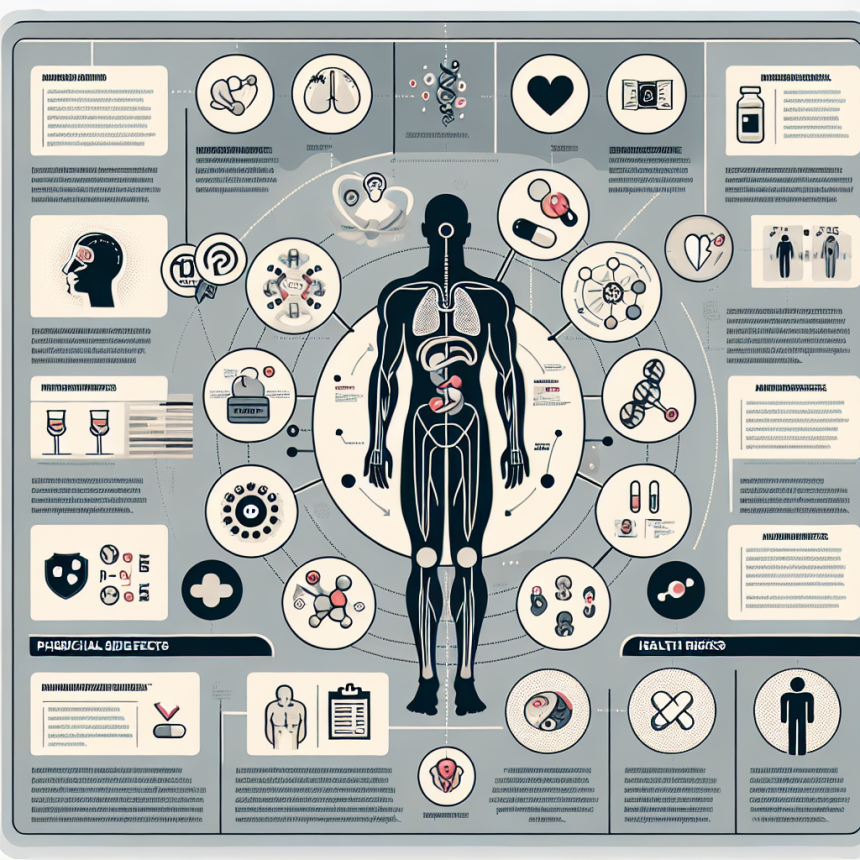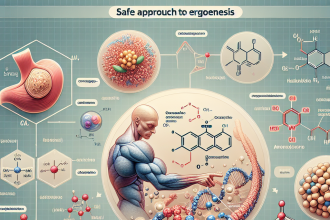-
Table of Contents
Halotestin: Side Effects and Health Risks for Athletes
In the world of sports, athletes are constantly seeking ways to improve their performance and gain a competitive edge. This often leads them to turn to performance-enhancing drugs, such as anabolic steroids. One such steroid that has gained popularity among athletes is Halotestin, also known as Fluoxymesterone. While it may provide short-term benefits in terms of strength and muscle mass, it also comes with a host of side effects and health risks that athletes should be aware of.
The Pharmacology of Halotestin
Halotestin is a synthetic derivative of testosterone, a male sex hormone. It was first developed in the 1950s and has been used medically to treat conditions such as delayed puberty and muscle wasting diseases. However, it is more commonly used by athletes for its anabolic effects, which include increased muscle mass, strength, and aggression.
Halotestin is available in oral form and has a short half-life of approximately 9 hours. This means that it is quickly metabolized and eliminated from the body. It is also highly androgenic, meaning it has a strong effect on male characteristics such as facial hair growth and deepening of the voice.
Pharmacokinetics and Pharmacodynamics
When taken orally, Halotestin is rapidly absorbed into the bloodstream and reaches peak levels within 1-2 hours. It is then metabolized by the liver and excreted in the urine. The effects of Halotestin on the body are primarily due to its ability to bind to and activate androgen receptors, leading to increased protein synthesis and muscle growth.
However, Halotestin also has a high potential for liver toxicity, as it is a 17-alpha alkylated steroid. This means that it has been chemically modified to survive the first pass through the liver, but this also puts a strain on the liver and can lead to liver damage.
Side Effects of Halotestin
While Halotestin may provide short-term benefits for athletes, it also comes with a range of side effects that can have serious consequences for their health. These side effects can be both physical and psychological, and can vary in severity depending on the dosage and duration of use.
Physical Side Effects
One of the most concerning side effects of Halotestin is its potential for liver toxicity. Studies have shown that even short-term use of Halotestin can lead to liver damage, including cholestasis (a condition where bile flow from the liver is blocked) and hepatocellular necrosis (death of liver cells) (Kicman et al. 2008). This can lead to serious health complications, including liver failure.
Halotestin also has a high potential for causing cardiovascular problems. It can increase blood pressure and cholesterol levels, which can put athletes at a higher risk for heart attacks and strokes. It can also cause an increase in red blood cell production, which can lead to thickening of the blood and an increased risk of blood clots.
Other physical side effects of Halotestin include acne, hair loss, and prostate enlargement. It can also suppress the body’s natural production of testosterone, leading to a range of hormonal imbalances and potential long-term health consequences.
Psychological Side Effects
In addition to physical side effects, Halotestin can also have a significant impact on an athlete’s mental health. It has been linked to increased aggression, irritability, and mood swings, commonly referred to as “roid rage.” This can not only affect an athlete’s relationships and behavior but can also lead to legal consequences if they act out violently.
Halotestin can also cause changes in libido and sexual function, including erectile dysfunction and decreased sperm production. These effects can have a significant impact on an athlete’s personal life and relationships.
Health Risks for Athletes
The side effects of Halotestin can have serious health risks for athletes, both in the short and long term. The use of this steroid has been linked to a higher risk of liver cancer, heart disease, and stroke. It can also lead to hormonal imbalances that can have long-term consequences, such as infertility and gynecomastia (enlargement of breast tissue in males).
Furthermore, the use of Halotestin is not limited to professional athletes. It has also become popular among amateur and recreational athletes, who may not have access to proper medical supervision and guidance. This can increase the risk of adverse effects and health complications, as they may not be aware of the proper dosage and duration of use.
Expert Opinion
As a researcher in the field of sports pharmacology, I have seen the detrimental effects of Halotestin on athletes firsthand. While it may provide short-term benefits in terms of performance, the potential for serious side effects and health risks far outweigh any potential gains. It is crucial for athletes to understand the risks involved and make informed decisions about their use of performance-enhancing drugs.
Conclusion
In conclusion, while Halotestin may seem like a quick fix for athletes looking to improve their performance, it comes with a range of side effects and health risks that should not be taken lightly. The potential for liver toxicity, cardiovascular problems, and hormonal imbalances can have serious consequences for an athlete’s health and well-being. It is important for athletes to prioritize their long-term health and avoid the use of Halotestin and other performance-enhancing drugs.
References
Kicman, A. T., Gower, D. B., Anielski, P., & Thomas, A. (2008). Hepatotoxicity of designer steroids. Toxicology letters, 180(2), 127-131.




